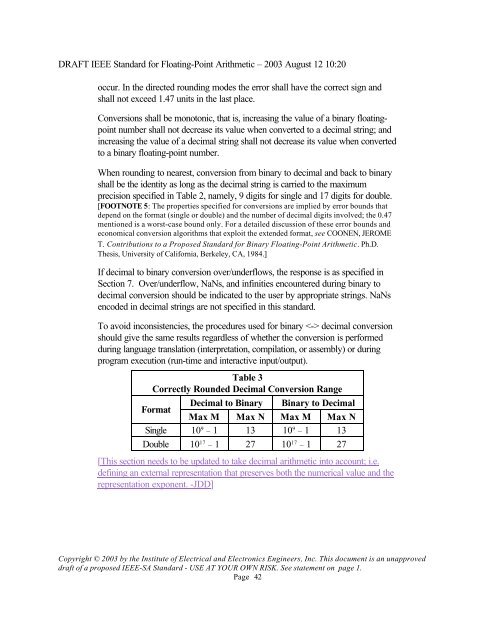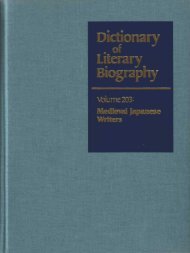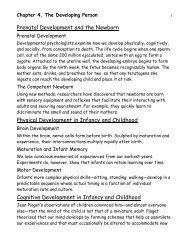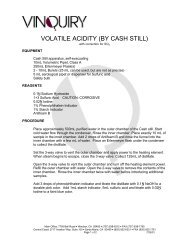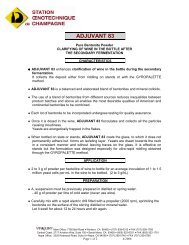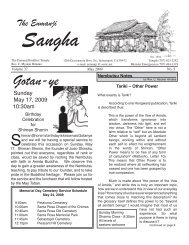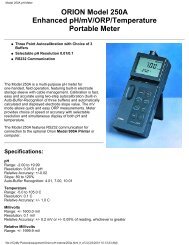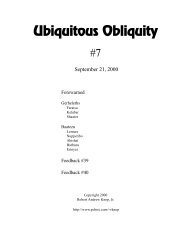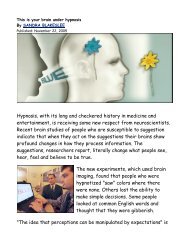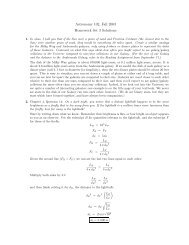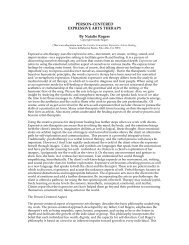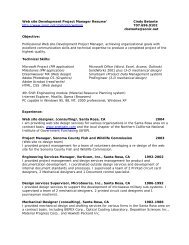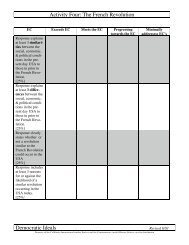DRAFT IEEE Standard for Binary Floating-Point Arithmetic - Sonic.net
DRAFT IEEE Standard for Binary Floating-Point Arithmetic - Sonic.net
DRAFT IEEE Standard for Binary Floating-Point Arithmetic - Sonic.net
Create successful ePaper yourself
Turn your PDF publications into a flip-book with our unique Google optimized e-Paper software.
<strong>DRAFT</strong> <strong>IEEE</strong> <strong>Standard</strong> <strong>for</strong> <strong>Floating</strong>-<strong>Point</strong> <strong>Arithmetic</strong> – 2003 August 12 10:20<br />
occur. In the directed rounding modes the error shall have the correct sign and<br />
shall not exceed 1.47 units in the last place.<br />
Conversions shall be monotonic, that is, increasing the value of a binary floatingpoint<br />
number shall not decrease its value when converted to a decimal string; and<br />
increasing the value of a decimal string shall not decrease its value when converted<br />
to a binary floating-point number.<br />
When rounding to nearest, conversion from binary to decimal and back to binary<br />
shall be the identity as long as the decimal string is carried to the maximum<br />
precision specified in Table 2, namely, 9 digits <strong>for</strong> single and 17 digits <strong>for</strong> double.<br />
[FOOTNOTE 5: The properties specified <strong>for</strong> conversions are implied by error bounds that<br />
depend on the <strong>for</strong>mat (single or double) and the number of decimal digits involved; the 0.47<br />
mentioned is a worst-case bound only. For a detailed discussion of these error bounds and<br />
economical conversion algorithms that exploit the extended <strong>for</strong>mat, see COONEN, JEROME<br />
T. Contributions to a Proposed <strong>Standard</strong> <strong>for</strong> <strong>Binary</strong> <strong>Floating</strong>-<strong>Point</strong> <strong>Arithmetic</strong>. Ph.D.<br />
Thesis, University of Cali<strong>for</strong>nia, Berkeley, CA, 1984.]<br />
If decimal to binary conversion over/underflows, the response is as specified in<br />
Section 7. Over/underflow, NaNs, and infinities encountered during binary to<br />
decimal conversion should be indicated to the user by appropriate strings. NaNs<br />
encoded in decimal strings are not specified in this standard.<br />
To avoid inconsistencies, the procedures used <strong>for</strong> binary decimal conversion<br />
should give the same results regardless of whether the conversion is per<strong>for</strong>med<br />
during language translation (interpretation, compilation, or assembly) or during<br />
program execution (run-time and interactive input/output).<br />
Table 3<br />
Correctly Rounded Decimal Conversion Range<br />
Format<br />
Decimal to <strong>Binary</strong> <strong>Binary</strong> to Decimal<br />
Max M Max N Max M Max N<br />
Single 10 9 – 1 13 10 9 – 1 13<br />
Double 10 17 – 1 27 10 17 – 1 27<br />
[This section needs to be updated to take decimal arithmetic into account; i.e.<br />
defining an external representation that preserves both the numerical value and the<br />
representation exponent. -JDD]<br />
Copyright © 2003 by the Institute of Electrical and Electronics Engineers, Inc. This document is an unapproved<br />
draft of a proposed <strong>IEEE</strong>-SA <strong>Standard</strong> - USE AT YOUR OWN RISK. See statement on page 1.<br />
Page 42


